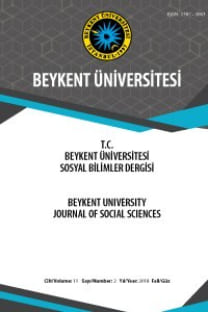Academic Quality and Ranking: A Methodical Approach for Departmental Ranking of Colleges and Universities in Saudi Arabia
___
- Asia Week. (2000). Asia’s Best Universities 2000.
- Camilli, G., & Firestone, W. A, (2000). ‘Values and State Ratings: An Examination of the State-by-State Education Indicators in Quality Counts’, Educational Measurement: Issues and Practice. Vol.18. No. 4.
- CHE. (2007). Your Gateway to the University Ranking. German Centre for Higher Education Development.
- Clarke, M, (2002). ‘News or Noise: An Analysis of US News and World Report’s Ranking Scores’, Educational Measurement: Issues and Practice. Vol.21. No. 4.
- Clarke, M. (2002). ‘Some Guidelines for Academic Quality Rankings’, Higher Education in Europe, Vol. 27. No. 4.
- Institute Of Higher Education, Shanghai Jiao Tong University (IHE-SJTU). (2005). Academic Ranking of World Universities.
- Linn, R., ed. Educational Measurement, 3rd edn. Washington, D.C.: American Council on Education, (1993).
- Meredith, M. (2004). ‘Why do Universities Compete in the Ratings Game: An empirical Analysis of the Effects of the U.S. News and World Report College Rankings,’ Research in Higher Education, Vol. 45.
- Merisotis. J. P. (2002). ‘Summary Report of the Invitational Roundtable on Statistical Indicators for the Quality Assessment of Higher/tertiary Education Institutions: Ranking and League Table Methodologies’, Higher Education in Europe, Vol. 27.
- SANOFF, A. (1998). ‘Rankings are Here to Stay: Colleges can Improve Them’, Chronicle of Higher Education. Vol. 45 No. 2. September.
- Siwinski, Perspektywy. W. (2002). ‘Ten Years of Rankings,’ Higher Education in Europe, Vol. 27.
- The Times Higher Education Supplement (THES, 2005), The Times Higher World University Rankings.
- Webster, D. S. (1986). Academic Quality Rankings of American Colleges and Universities. Springfield: Charles C. Thomas.
- Yanbu Industrial College (YIC, 2013). Academic Catalog- 2012-2013, Kingdom of Saudi Arabia
- ISSN: 1307-5063
- Yayın Aralığı: Yılda 2 Sayı
- Başlangıç: 2007
- Yayıncı: Beykent Üniversitesi
Abdulmonem ALZALABANİ, Reji D. NAİR
Private Domestic Savings Mobilization by Commercial Banks and Economic Growth in Nigeria
Musa Success JİBRİN, İyaji DANJUMA, Success Ejura BLESSİNG
Quality of Higher Education in Bangladesh: Governance Framework and Quality Issues
Golam RABBANİ, Solaiman CHOWDHURY
A Study on the Organizational Justice and Organizational Citizenship Dimensions and Behaviors
African Values for the Practice of Human Resource Management
